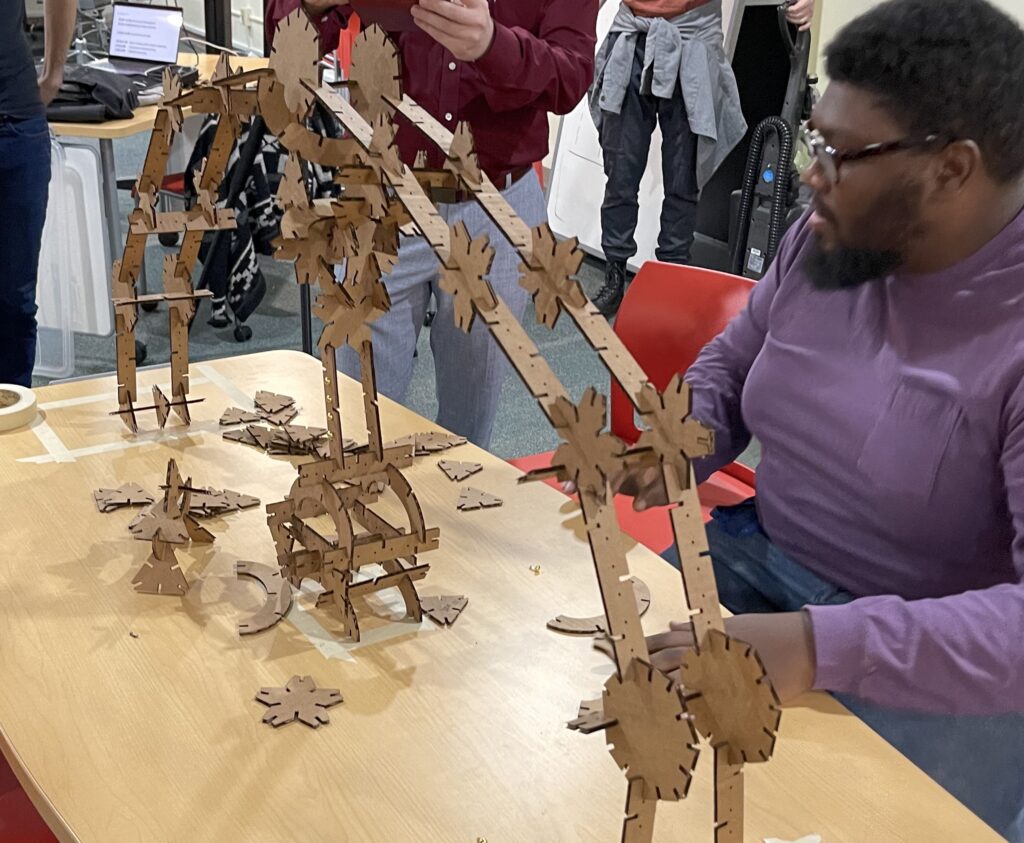How do we interest and retain more—and more diverse—students in science and technology at the Baccalaureate level?

This project (funded by the National Science Foundation for $1,499,663) develops general education courses that feature making and design thinking, weaving state-of-the- art expertise in informal learning into the undergraduate curriculum at a minority-serving institution in New York City. The project’s partners—Queens College (QC) and the New York Hall of Science (NYSCI) —are sited within 3 miles of each other in the heart of the Borough of Queens, in a community with the highest levels of diversity in the contiguous United States (Olson, 2014; Narula, 2014). The partners complement each other in expertise in formal (QC) and informal (NYSCI) science education.
The project will support creating and running 8-10 undergraduate courses incorporating project-based pedagogical approaches introducing undergraduate students to making and design thinking. NYSCI will immerse QC Faculty Fellows in its Design-Make Play approach, providing professional development on project-based learning. QC Faculty Fellows will in turn develop courses and integrate them into the gen- eral education curriculum, which is standardized across the City University of New York (CUNY). An Advisory Council will oversee the project and usher the curricular integration forward, and will develop a multi-course certificate in design. We will set up a curricular pathway—or, better yet, an avenue—for stu- dents to dive deeply into the design process, through team-based work, interdisciplinarity, problem solv- ing, and applied technology, elements that only exist piecemeal elsewhere in the curriculum.
Intellectual Merit: The project allows us to ask to what extent the Design-Make-Play approach general- izes to higher education: Are undergraduates engaged through making, discovery, exploration? How does the making curriculum compare to existing general education in STEM-focused learning outcomes? Is this an effective approach for broadening participation in STEM? The project’s evaluation examines out- comes for 800-1500 students (achievement of learning outcomes, course performance, pursuit of STEM major, retention, compared to a propensity score-matched group, and exploring the extent to which out- comes are mediated by personal constructs such as engagement, self-efficacy, and reduction in STEM- related anxiety), for participating faculty (impact of professional development, transferability of skills learned to other teaching), and for the partner institutions (curricular development and implementation).
Broader Impacts: Our research will contribute to the understanding of how to build faculty capacity through a partnership between a Hispanic-Serving Institution (QC) and a science museum (NYSCI). Our institutions share mission goals of instigating critical thinking and active citizenship, QC through its rig- orous liberal arts and professional and pre-professional programs, NYSCI through Design-Make-Play. By integrating informal learning into the formal undergraduate curriculum, in non-STEM general education courses, we will expose a broad range of undergraduates to STEM-related design techniques and activi- ties. Our evaluation plan will thus gather evidence about whether these enhanced learning environments lead to broadening the participation of undergraduate students majoring in STEM disciplines at QC. Pro- ject findings will inform national efforts for increasing the number of STEM graduates.